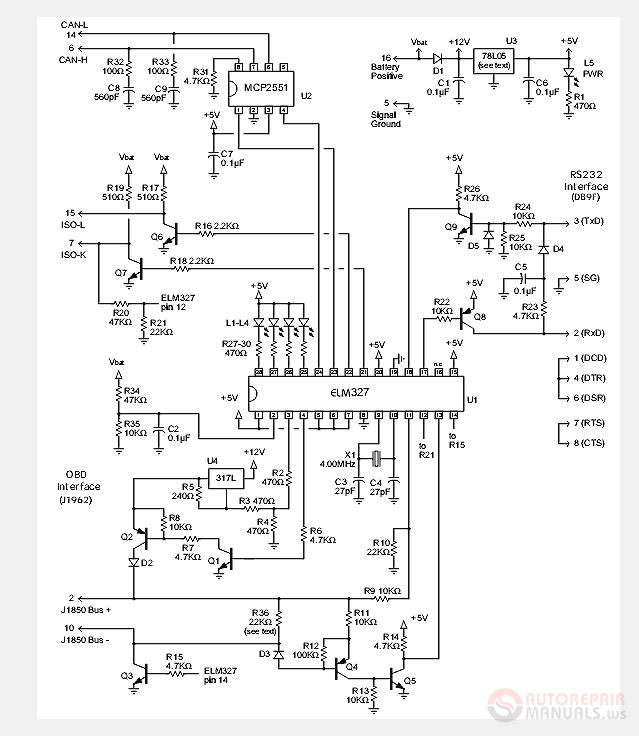
Obd Ii Iso 9141 Interface Definition
This article needs additional citations for. Unsourced material may be challenged and removed. (June 2009) () On-board diagnostics ( OBD) is an term referring to a vehicle's self-diagnostic and reporting capability. OBD systems give the vehicle owner or repair technician access to the status of the various vehicle subsystems. Free hd movie downloads high definition.
The amount of diagnostic information available via OBD has varied widely since its introduction in the early 1980s versions of on-board vehicle computers. Early versions of OBD would simply illuminate a malfunction indicator light or ' if a problem was detected but would not provide any information as to the nature of the problem. Modern OBD implementations use a standardized digital communications port to provide real-time data in addition to a standardized series of, or DTCs, which allow one to rapidly identify and remedy malfunctions within the vehicle. Contents • • • • • • • • • • • • • • • • • • • • • • • • • • • • • • • History [ ] • 1968: introduces the first on-board computer system with scanning capability, in their models. • 1978: On-board computers begin appearing on consumer vehicles, largely motivated by their need for real-time tuning of systems. Simple OBD implementations appear, though there is no standardization in what is monitored or how it is reported.
• 1980: implements a proprietary interface and for testing of the (ECM) on the vehicle assembly line. The 'assembly line diagnostic link' () protocol broadcasts at 160.
OBD systems are designed to monitor the performance of some of an engine’s major components including those responsible for controlling emissions. In other words, OBD is the language of the Engine Control Unit (ECU), and it was designed to help fight emissions and engine failures. You can find five signaling protocols which are permitted with the OBD-2 interface. Most automobiles implement just 1 of the protocols. ISO 9141-2: This process.
Implemented on California vehicles for the 1980 model year, and the rest of the United States in 1981. In most cases, the ECM (Engine Control Module) can be made to display DTCs (Diagnostic Trouble Code(s)) as a flashing pattern on the CEL (Check Engine Lamp) or MIL (Malfunction Indicator Lamp).
A PC based Software package called WinALDL will listen to the CLCC (Closed Loop Carburetor Control) and early CLC EFI datastreams over a fairly easy to construct interface cable that converts the 160 baud TTL serial data being transmitted by the ECM to RS232 or USB serial data but there is not much information transmitted by these early ECMs. • 1986: An upgraded version of the ALDL protocol appears which communicates at 8192 with half-duplex signaling. This protocol is defined in GM XDE-5024B. • 1988: The () recommends a standardized diagnostic connector and set of diagnostic test signals.

• 1991: The (CARB) requires that all new vehicles sold in in 1991 and newer vehicles have some basic OBD capability. These requirements are generally referred to as 'OBD-I', though this name is the introduction of OBD-II. The data link connector and its position are not standardized, nor is the data protocol. • 1994: Motivated by a desire for a statewide program, the CARB issues the OBD-II specification and mandates that it be adopted for all cars sold in California starting in model year 1996 (see CCR Title 13 Section 1968.1 and 40 CFR Part 86 Section 86.094). The DTCs and connector suggested by the are incorporated into this specification. • 1996: The OBD-II specification is made mandatory for all cars manufactured in the United States to be sold in the United States. • 2001: The makes mandatory for all gasoline (petrol) vehicles sold in the European Union, starting in MY2001 (see Directive 98/69/EC ).